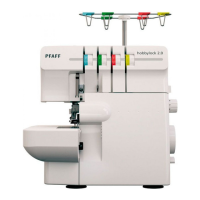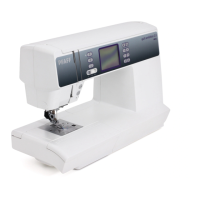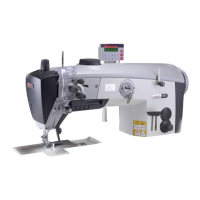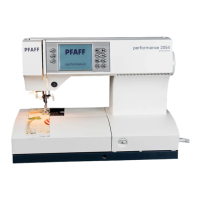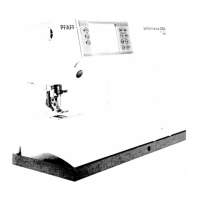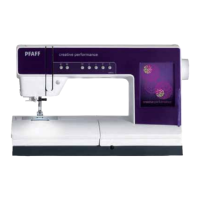26
B
A
Blindhem
The blindhem stitch, number 09, is used to make
LQYLVLEOHKHPVRQVNLUWVWURXVHUVDQGKRPH
decorating. Use foot number 3 with IDT™ system.
1. Finish the edge of the hem.
2. Fold and press the hem allowance to the wrong
side.
3. Fold the hem back on itself so approximately
µFPRIWKHÀQLVKHGHGJHH[WHQGV
beyond the fold. The wrong side of your
SURMHFWVKRXOGQRZEHIDFLQJXS
4. Place the fabric under the presser foot so that
WKHIROGUXQVDORQJHGJHJXLGH$
5. When the needle swings into the fold it should
catch a small amount of fabric. If the stitches
DUHYLVLEOHRQWKHULJKWVLGHDGMXVWHGJHJXLGH
$E\WXUQLQJDGMXVWLQJVFUHZ%XQWLOWKHVWLWFK
WKDWFDWFKHVWKHKHPMXVWEDUHO\VKRZV
Elastic blindhem stitch
The elastic blindhem stitch, number 10, is
especially suitable for stretchy fabrics, because the
zigzag in the stitch lets the stitch stretch. The hem
LVÀQLVKHGDQGVHZQDWWKHVDPHWLPH7KHUHLVQR
QHHGWRÀQLVKWKHUDZHGJHÀUVWRQPRVWNQLWV
Sewing in zippers
There are different ways to sew in zippers. Follow
the directions included with your pattern for best
results.
For all types of zippers it is important to sew close
to the teeth of the zipper. The zipper foot 4 can be
snapped to the presser foot bar on the left or right,
depending on how you will insert your zipper.
6HWWKHVWLWFKSRVLWLRQVRWKHQHHGOHHQWHUVFORVHWR
the edge of the zipper teeth by using one of the 29
QHHGOHSRVLWLRQVDYDLODEOHIRUWKHVWUDLJKWVWLWFK,I
the presser foot is attached on the right side, the
QHHGOHPXVWRQO\EHPRYHGWRWKHULJKW,IWKHIRRW
is attached on the left, the needle must only be
PRYHGWRWKHOHIW
%OLQGKHPVWLWFK
QXPEHU
(ODVWLFEOLQGKHP
VWLWFKQXPEHU
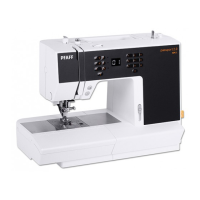
